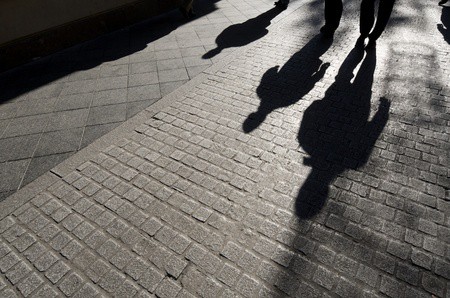Seeing the light: The role of illumination in crime prevention

As a former law enforcement officer and a current advisory member of the Illuminating Engineering Society of North America (IESNA) Committee on Security on Lighting and Crime, I have been thinking about the topic of security and crime prevention quite a bit lately.
With everything we hear in the news these days in regard to crime, terrorism, workplace violence and homeland security, the role of a facility manager can get more complex with more at stake all the time.
Whether it’s a food processing plant with a disgruntled employee, a hospital with an active shooter, or the Mall of America with a bomb threat, we all need to be more cognizant of our surroundings and have a plan to look out for our properties, facilities and people.
In this article, we will discuss the use of light as it may relate to crime. A well-stocked toolbox for crime prevention will contain many things. A written emergency preparedness plan, security guards, alarms, panic buttons, CCTV and mock practice situations could all be included, depending on the property and use. Lighting may be a simple, first line of defense as a crime deterrent, but there are definite things to consider.
When used correctly, lighting can help deter crime. Most criminals do not want to be seen. If a facility or area is lit up, that leaves the mischievous vulnerable to being seen, identified or recorded, thus resulting in apprehension.
That being said, proper use of light near areas of entry, valuables and secure areas can help witnesses of crime to identify suspects and security personnel and law enforcement to see suspicious activity.
The appropriate amount and color of quality light can also help CCTV cameras capture valuable details that may otherwise render useless. For example, low-pressure sodium lighting is not a good source for rendering colors, thus would not be helpful in identifying descriptions.
Adequate lighting in parking lots and walking areas can help employees, students, patients and customers feel more secure when out at night becoming a factor in where they otherwise may or may not put themselves for parking, shopping or working.
On the “dark side,” we must also consider potential negative factors when designing with light as it may relate to crime. As light helps the good people see better, it also helps those with malicious intents to see better as well.
Lighting should be set up to prevent excessive glare, unless it is used to intentionally blind a potential intruder. It can be difficult to function and see what needs to be seen in a glaring situation. Too much light can cause light trespass, which is increasingly becoming a city ordinance violation in more areas.
When using older technology, too much light can use an excessive amount of energy where the cost does not outweigh any benefit. And just as we may feel more comfortable walking in a well-lit area at night, it can also give us a false sense of security causing us to drop our guard and create more vulnerability.
Speaking of old technology, besides the government phasing out certain lamps and light sources, there could be additional reasons to consider auditing areas for upgrades. The obvious benefit would be availability, maintenance and energy savings included with newer products. There could also be a case for using controls, vacancy sensors and dimming.
In addition to saving energy when not in use, a sensor will bring the light to full brightness when someone enters the area. In the application of crime prevention, a person who is unauthorized in an area, as well as those monitoring for security, would immediately see extra light acting as a potential indicator of someone who should not be in the area.
These days, good manufacturers make fixtures with excellent cutoffs to prevent light trespass and quality light and color rendering to capture excellent video on CCTV. The market now offers new, exciting technologies that combine energy efficient LED fixtures with built in cameras and security features such as notifications, messaging, surveillance and recordings. There are even phone apps that connect to this technology and act as a virtual security guard when walking in areas armed with this equipment.
This is all very exciting and not as expensive as you would think. Besides, what is more expensive: an investment in a system that could prevent crime, up safety and keep your facility up to city code standards or one lawsuit?
In conclusion, nothing or no one will ever prevent all crime. Lighting can be one more tool in your toolbox. It is also important when designing with light to note applicable requirements in your area such as ASHRAE, International Energy Conservation Code and city ordinances.
Most importantly, everyone should be aware of their surroundings no matter where they are. Be smart and have a plan, just in case you are ever in the vicinity of a criminal. Stay safe out there.
Source: Multibriefs.com















 Accessibility
Accessibility